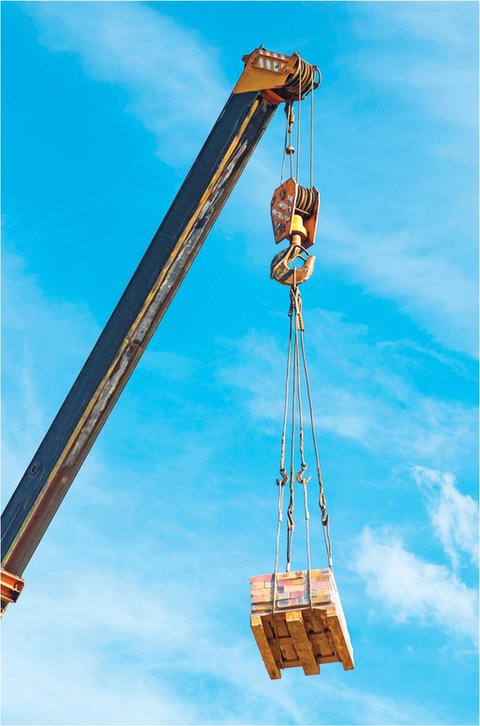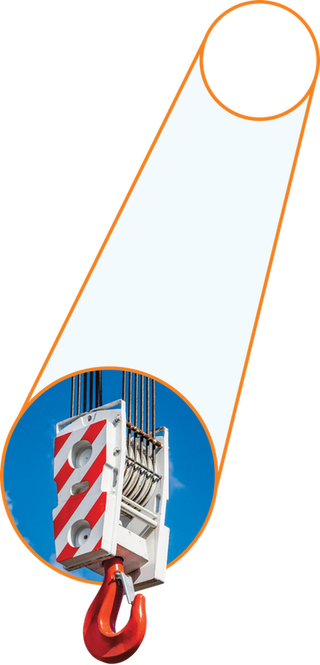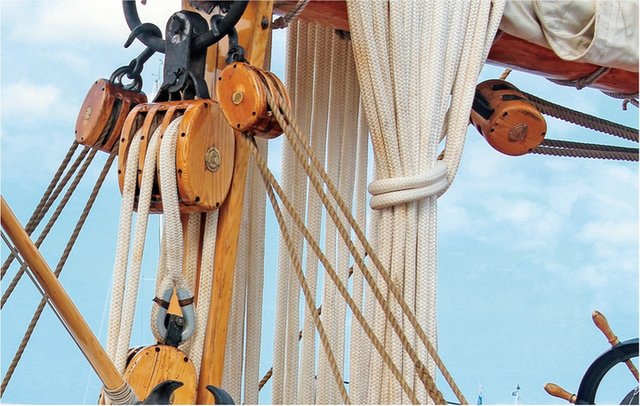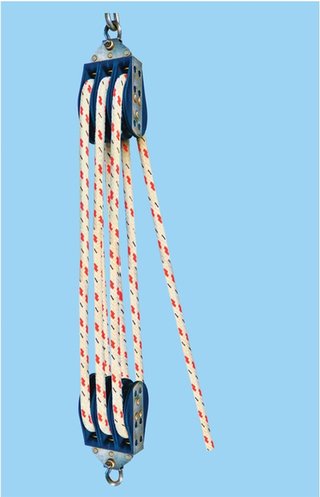Pulleysonthe Move
Thepulleyatthetopofaflagpolestaysinoneplace.It’sattached,orfixed,tothepole.So,it’scalledafixed pulley.
Afixedpulleyisfineforliftingsomethinglikeaflag.Butwhatiftheloadismuchheavier?Whatiftheloadistheengineofacar?Youcouldneverliftitusingonefixed pulley.
So,addasecondpulleybelowthefixedone.Attachthesecondpulleytotheload.Thatway,thepulleymoveswiththeload.Andthesecondpulleydoublesyourforce!It’slikehavingtwopeoplepullinginsteadof one.
Addingathirdpulleymultipliesyourforcebythree.Afourthpulley. . . well,yougettheidea.Thismayseemlikemagic.Butit’sscience.Theropesupportstheloadbyloopingatthebottomofthepulleysthatlift it.


Cranesliketheseusemanypulleystoliftheavy weights.
less
distance,
more
force
greater
distance,
less
force
Afixedpulleychangesthedirectionof force.
Asyouaddmorepulleys,youpulltheropeagreaterdistancebutuselessforcetomovethe load.
Countthepiecesofropeinthediagram.Thenumberofpiecestellsyouhowmanytimesthosepulleysincreasetheforce.(Countonlythepiecesofropethatloopunderapulley.Theysupportthe load.)
Mostmovablepulleysarejoinedtofixedpulleys.Constructionsitesaregreatforwatchingpulleysin action.
Pulleysusedtogethermakelifting easy.


Pulleysusedonsailboatsarecalled blocks.
blocks
Trade‑offs
Youknowthatusingmorepulleyswillmultiplyyourforce.Thismeansthatlesseffortisneededfor lifting.
Imagineliftingaheavyboxofbooks.Youuseafixedpulley.Youtakeholdoftheropeandpull.Fourtugslatertheboxisona truck.
Forthenextbox,youaddamovablepulley.Yourforceisdoubled.Yet,youuseonlyhalftheeffort.It’seasier,butittakeseighttugsontherope.That’sthetrade‑off.Themorepulleysyouuse,theeasieritistopulltherope,butthefartheryouhavetopullit.That’sagood trade!
block
